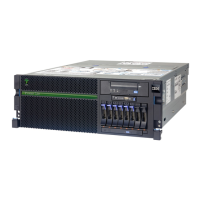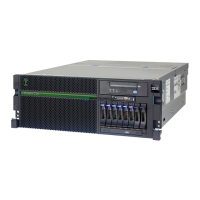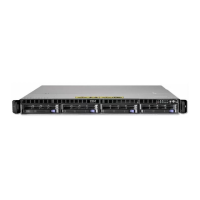Chapter 3. Virtualization 145
Partition mobility provides systems management flexibility and improves system availability:
Avoid planned outages for hardware or firmware maintenance by moving logical partitions
to another server and then performing the maintenance. Live Partition Mobility can help
lead to zero downtime maintenance because you can use it to work around scheduled
maintenance activities.
Avoid downtime for a server upgrade by moving logical partitions to another server and
then performing the upgrade. This approach allows your users to continue their work
without disruption.
Avoid unplanned downtime. With preventive failure management, if a server indicates a
potential failure, you can move its logical partitions to another server before the failure
occurs. Partition mobility can help avoid unplanned downtime.
Take advantage of server optimization:
– Consolidation: You can consolidate workloads running on several small, under-used
servers onto a single large server.
– Deconsolidation: You can move workloads from server to server to optimize resource
use and workload performance within your computing environment. With active
partition mobility, you can manage workloads with minimal downtime.
Mobile partition’s operating system requirements
The operating system running in the mobile partition has to be AIX or Linux. The Virtual I/O
Server partition itself cannot be migrated. All versions of AIX and Linux supported on the IBM
POWER7+ processor-based servers also support partition mobility.
Source and destination system requirements
The source partition must be one that has only virtual devices. If there are any physical
devices in its allocation, they must be removed before the validation or migration is initiated.
An N_Port ID Virtualization (NPIV) device is considered virtual and is compatible with
partition migration.
The hypervisor must support the Partition Mobility functionality (also called migration process)
that is available on POWER6, POWER7 and POWER7+ processor-based hypervisors.
Firmware must be at firmware level eFW3.2 or later. All POWER7+ processor-based
hypervisors support Live Partition Mobility. Source and destination systems can have
separate firmware levels, but they must be compatible with each other.
A possibility is to migrate partitions back and forth between POWER6, POWER7 and
POWER7+ processor-based servers. Partition Mobility uses the POWER6 Compatibility
Modes that are provided by POWER7 and POWER7+ processor-based servers. On the
POWER7+ processor-based server, the migrated partition is then executing in POWER6
Compatibility Mode.
If you want to move an active logical partition from a POWER6 processor-based server to a
POWER7+ processor-based server so that the logical partition can take advantage of the
additional capabilities available with the POWER7+ processor, use the following steps:
1. Set the partition-preferred processor compatibility mode to the default mode. When you
activate the logical partition on the POWER6 processor-based server, it runs in the
POWER6 mode.
Support of both processors: Because POWER7+ and POWER7 use the same
Instruction Set Architecture (ISA), they are equivalent regarding partition mobility, that is
POWER7 Compatibility Mode supports both POWER7 and POWER7+ processors.

